Pūrākau : PUKEHINAHINA
| PUKEHINAHINA The Battle of Gate Pā at Pukehinahina (puke hill, hinahina or mahoe tree) occurred on the 29 April 1864. It is remembered as the battle where hugely outnumbered Māori defenders managed to repulse an experienced British force and secure what many regard as a famous Māori victory. In the early months of 1864 began with British troops landing at the northern end of Te Papa, an action seen by Māori as an invasion. They met and resolved to fight the invaders and drew up a Code of Conduct – rules governing the forthcoming fight. The code was agreed to by the Māori leaders who then issued a challenge to the British. When it was ignored Māori selected a site on the Pukehinahina ridge where they designed and built a radical new fighting pā. The building of Gate Pā began on 3 April 1864. Fortifications were engineered by Penetaka Tuaia of Ngāti Rangi, Wairoa Marae. The years of the Musket Wars had led to a major change in traditional pā design to one of protection against new military technologies such as artillery and rockets. The British were unaware of the complexity of Gate Pā , ‘inside, the redoubt was less a fortification than a killing ground. Rāwiri Tuaia Puhirake soon realised the reason for the delay in accepting their challenge to fight when British reinforcements arrived from Auckland. The 68th (Durham) Regiment and 43rd Monmouth (Monmouthshire) Regiments arrived and constructed the Monmouth and Durham redoubts as protection for Camp Te Papa. By the end of April 1864, 2000 troops had assembled. General Duncan Cameron, commander throughout the Waikato War, arrived on April 21 to take overall command. On April 26 600 sailors and Royal Marines disembarked from HMS Harrier, Curacoa, Esk and Miranda. A 110-pounder Armstrong gun, two 40-pounder and two 6-pounder Armstrong guns plus smaller artillery pieces were unloaded and taken to within firing distance of Gate Pā at Pukereia, where the current whare Maiangiangi sit, Cameron moved his forces out from Te Papa and stationed them around Gate Pā on April 27 and 28. A ‘feigned attack’ was made on April 28 to divert Māori attention whilst Colonel Greer led the 730 men of the 68th over the eastern mudflats under cover of darkness to take up position at the rear and cut off Māori escape and water supply. It rained heavily throughout that night. At first light on April 29 an intense barrage began. It was said to have been the heaviest artillery bombardment of the New Zealand Wars. At 4pm, after nine hours and with a breach in the pekerangi or palisade having been made, Cameron gave the order to attack. Cameron moved his men up for an assault upon the pā. Led by their officers (who thus were the first to be struck down by the Māori warriors) the men swarmed into the trenches and began to drive out the defenders. But Greer’s men were at the exits, and the Māori’s poured back into the trenches. The soldiers and sailors now in the pā believed this rush to be reinforcements. Without the leadership of their officers, they fled the pā, still held by Māori tribes and their allies.” Many officers were killed or wounded during the initial assault. Cameron was forced to call off the attack and a disorderly retreat ensued leaving a hundred dead and wounded soldiers behind. It was a triumph of military construction for the Māori and a disaster for the British. During the night, out of ammunition and without the supplies to withstand a long siege, Māori quietly abandoned the pā which had served their purpose. They took their wounded along with British muskets and disappeared. Honouring the Poteriwhi Code of Conduct the wounded soldiers were not maltreated, looted or mutilated, but instead given water before they left. Those who received assistance included the leader of the assault Lt Colonel Henry Booth who had been shot through the spine and who later died from his wounds. At 5am on April 30th, a sailor from Harrier crept up to the pā and found it deserted. The dead and wounded were then carried from the battlefield. There was a great outcry, both in New Zealand and England, that a force of 1,689 soldiers and sailors could have been defeated by 230 Māori. |
Waiata
Click here
Waiata – Te Haka o Pukehinahina
Waiata – Te Peruperu a Pukehinahina
Kiriata
Click here
Kiriata – Gate Pā – The Battle of Pukehinahina
Other resources :
Nuku Reo :
Click here
